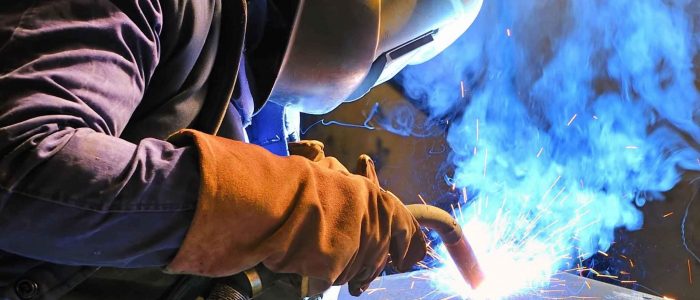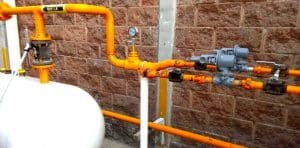Do you need to learn how to weld metals but don't know where to start? What materials are needed to make high-quality welds? What risks and precautions do you need to take when it comes to welding metals?
Overheating and melting a metal to join two pieces of metal is what is known as welding.
There are several ways to weld, but the most common are gas metal arc welding, MIG welding, and arc welding.
Many people are intimidated when welding for the first time, but if you take proper safety precautions, you can easily weld in less than a jiffy.
Wear a welding helmet, gloves and apron
Welding can generate sparks that can damage your eyes. At other times, it is the metallic debris that is propelled towards your face. You can buy welding helmets or electronic helmets for welding to protect your face from sparks and heat generated by your welding machine at a hardware store or online.
Welding gloves are made of leather to protect your hand against multiple elements including electrical shock, heat and radiation. Gloves are imperative when it comes to making a weld.
The apron, for its part, prevents sparks from coming into contact with your clothes with the consequent burns. Invest in a durable, non-flammable apron for maximum safety welding.
In addition to these elements, it is also important to work in a properly ventilated area. Welds can give off gases and fumes that can be harmful if inhaled. Make sure you work in a space with open windows and / or doors and never weld galvanized steel, as its gases are very dangerous.
You should also check your soldering iron before you start. Check all the cables and connections of the device to replace those components that are damaged or worn.
Prepare the metal for welding
Scrape off any paint and rust before you begin. You can use a paper grain or a wire brush for this.
Buff paint and rust until the metal appears shiny and metallic, but does not distort the thin metal. If it's thick metal, bevel the edges to ensure the weld penetrates fully.
Then clean the metal with acetone. In this way you will be able to eliminate any remaining dust, dirt or residues that may hinder an effective welding. Soak a cloth in acetone and wipe it over the entire surface. Acetone is excellent for removing anything that can interfere with welding.
Lastly, blot the metal with a dry cloth by rubbing it over the metal. The goal is to remove any remaining acetone. When the metal has completely dried it will be time to start welding.
How to MIG Welding
Before you start you need to make sure that the MIG welding is set up correctly. The MIG welder needs to have a cable on the spool. Watch the tip of the gun to make sure it feeds properly into the gun. Shielding gas canisters also need to be properly configured to weld properly. Attach the clamp of your MIG welder to the table to prevent electrocution.
Grab the gun with both hands and rest one on the table you are welding on to control the direction of the gun as you weld. With the other hand grasp the pistol and use your index finger to press the trigger. You should always wear gloves.
Place the gun at a 20-degree angle against the piece of metal to make it easier to penetrate the metal while welding. This is often called a push position.
Use your helmet to weld on your face and press the trigger of the gun. You should see a bright spark at the end of the welding gun. Always keep your face away from welding to avoid accidents and inhaling toxic fumes.
In one slow motion, press the tip of the welding gun against the piece of metal. You can see sparks. Set the gun a second or two ahead of time before moving it.
Move the gun in small circles to work your way through the metal. You will notice that as you move the gun, hot metal begins to build up behind the tip of the gun. When you get to the end of your welding, simply release the trigger and turn off the device.
If you move the device too slowly, holes may appear in your metal sheet. On the other hand, if you do it too quickly, the metal may not heat up enough to melt it, giving a poor result.


